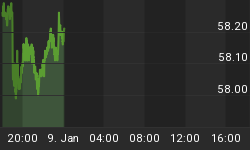
Source: www.stlouisfed.org
If anyone ever wondered why the US economy is so sluggish they need not look any further than the velocity of money or velocity of currency as it has sometimes known. The truth is that money is simply not moving through the economy at a good pace. As the chart shows the velocity of money has fallen to levels never seen since they began tracking it back in the late 1950's. This is something akin to presenting a great looking hamburger on the economy only to discover it is just a bun without the beef.
So what is the velocity of money? Simply defined the velocity of money is the average frequency with which a unit of money is spent on new goods and services produced domestically in a specific period. The velocity of money is the ratio of nominal GDP divided by a measure of money supply in this case M2. At a ratio of 1.54 it is well down from the peak of over 2.1 seen in the late 1990's and below levels seen in the 1960's and 1970's between 1.6 and 1.8.
The velocity of money is not a number that the authorities would want to point to, as it would not support the thesis that the economy is improving. If the economy were truly improving, the velocity of money would be rising not falling. Note it did briefly rebound after the initial decline following the collapse of the High Tech/Internet market from 2000-2002. After that and especially through the crash of 2008 it began a steep decline.
What is interesting about this decline is that it is coming against the backdrop of the Fed's QE3 program whereby they are purchasing $85 billion/month of bonds ($40 billion of mortgage-backed securities (MBS) of dubious quality and $45 billion of government treasuries). The Fed's balance sheet has grown to almost $3.1 trillion from under $1 trillion prior to the crash of 2008. About a third of the Fed's portfolio is in MBS which some believe is of dubious quality.
Despite all of the money the Fed has pumped into the financial system over the past few years the simple reality is that is not turning over nor is the money multiplier growing. The money multiplier, a simple ratio of M1 to the monetary base has been falling steadily for years. Following the crash of 2008 it plunged.
Total credit market debt in the US has more than doubled since 2000. It has grown from $25.9 trillion to $56.3 trillion at the latest report at the end of the Q3 2012 a 117% increase. GDP on the other hand has only grown by about 58% from $9.95 trillion to $15.7 trillion in the same period. That means it took $5.30 of new debt to purchase $1 of GDP. From 1990 to 2000, it only took $3.08 of new debt to purchase $1 of GDP. In each prior decade, the amount of new debt to purchase an additional $1 of GDP was even smaller again. What this suggests is that the US is hitting a debt wall, as it requires increasing amounts of debt to purchase an additional $1 of GDP. It is no longer working as the velocity of money suggests.
Yet against this backdrop the unemployment rolls have soared, personal income has been falling, the labour force participation rate has been falling helping the headline unemployment rate actually look better than it really is, and the number of people receiving food stamps has soared. In the past five years alone while labour force has only grown by about 1 million but those not in the labour force or at least defined as not being in the labour force has soared 9.8 million. Unemployment has gone up by 4.5 million people made up of decline of 5.3 million full time jobs and a gain of 0.9 million part time jobs. Finally, the number of people receiving food stamps in the US has gone from 26.3 million to 46.6 million a gain of 20.3 million.
Yet the reports say that the US economy is improving. The numbers suggest otherwise. So where's the beef?
















